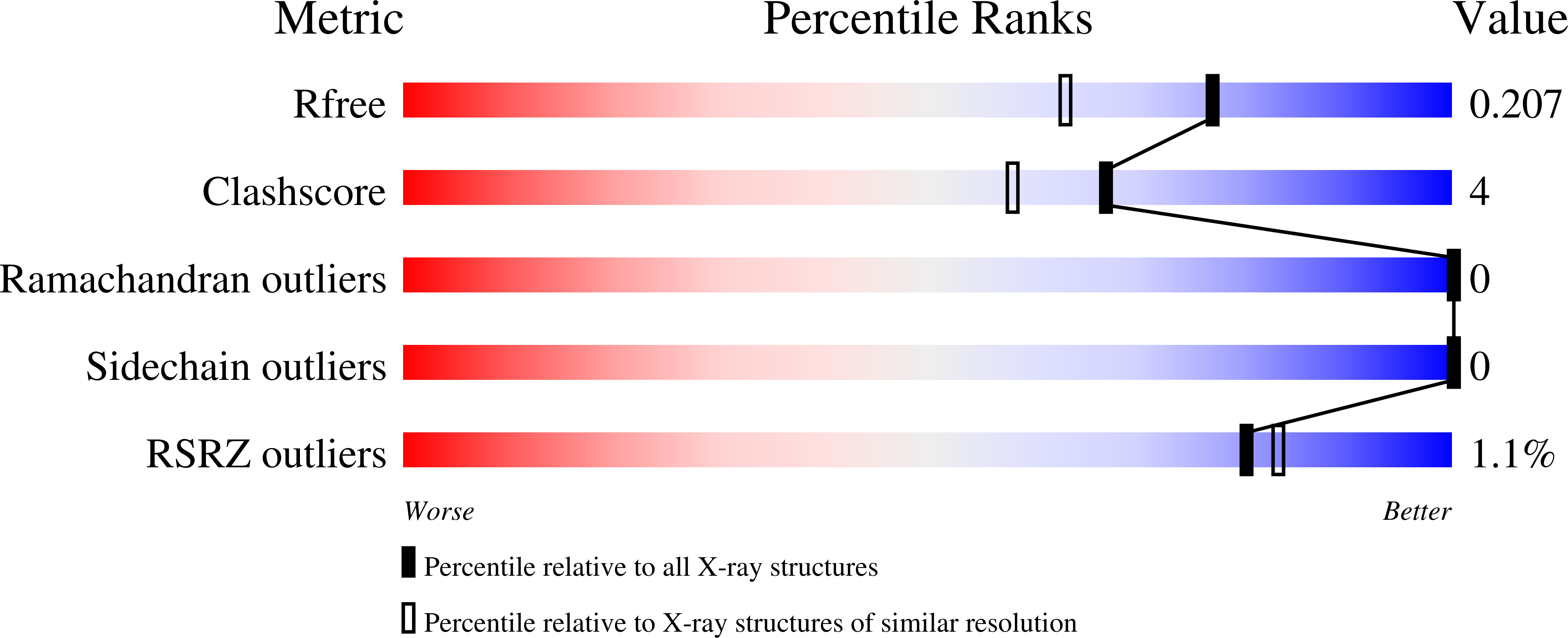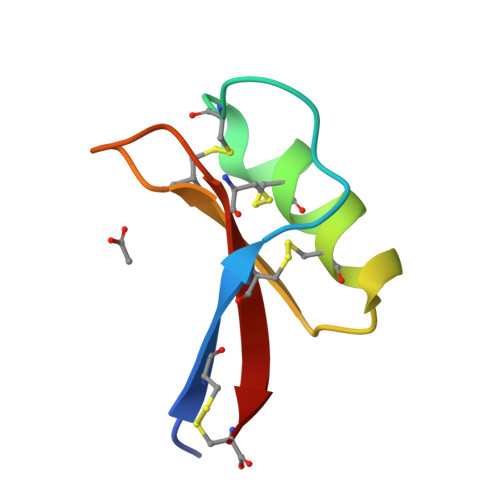The Tomato Defensin Tpp3 Binds Phosphatidylinositol (4,5)-Bisphosphate Via a Conserved Dimeric Cationic Grip Conformation to Mediate Cell Lysis.
Baxter, A.A., Richter, V., Lay, F.T., Poon, I.K.H., Adda, C.G., Veneer, P.K., Phan, T.K., Bleackley, M.R., Anderson, M.A., Kvansakul, M., Hulett, M.D.(2015) Mol Cell Biol 35: 1964
- PubMed: 25802281
- DOI: https://doi.org/10.1128/MCB.00282-15
- Primary Citation of Related Structures:
4UJ0 - PubMed Abstract:
Defensins are a class of ubiquitously expressed cationic antimicrobial peptides (CAPs) that play an important role in innate defense. Plant defensins are active against a broad range of microbial pathogens and act via multiple mechanisms, including cell membrane permeabilization. The cytolytic activity of defensins has been proposed to involve interaction with specific lipid components in the target cell wall or membrane and defensin oligomerization. Indeed, the defensin Nicotiana alata defensin 1 (NaD1) binds to a broad range of membrane phosphatidylinositol phosphates and forms an oligomeric complex with phosphatidylinositol (4,5)-bisphosphate (PIP2) that facilitates membrane lysis of both mammalian tumor and fungal cells. Here, we report that the tomato defensin TPP3 has a unique lipid binding profile that is specific for PIP2 with which it forms an oligomeric complex that is critical for cytolytic activity. Structural characterization of TPP3 by X-ray crystallography and site-directed mutagenesis demonstrated that it forms a dimer in a "cationic grip" conformation that specifically accommodates the head group of PIP2 to mediate cooperative higher-order oligomerization and subsequent membrane permeabilization. These findings suggest that certain plant defensins are innate immune receptors for phospholipids and adopt conserved dimeric configurations to mediate PIP2 binding and membrane permeabilization. This mechanism of innate defense may be conserved across defensins from different species.
Organizational Affiliation:
Department of Biochemistry, La Trobe Institute for Molecular Science, La Trobe University, Melbourne, Victoria, Australia.


















